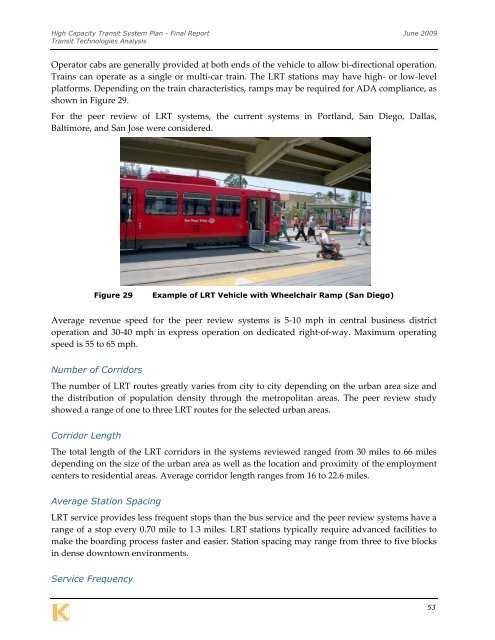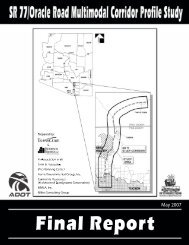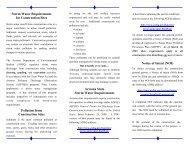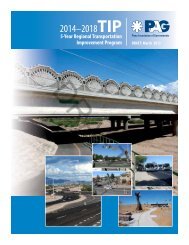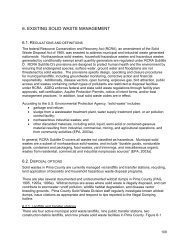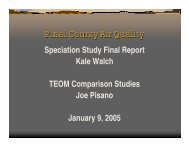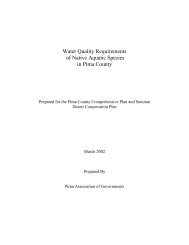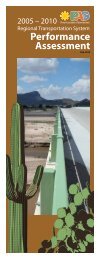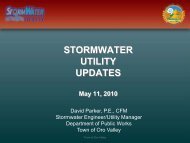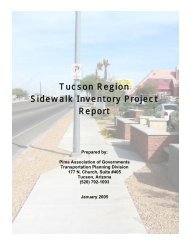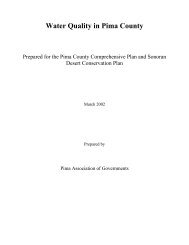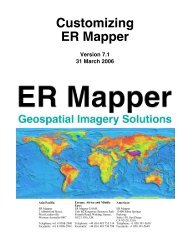- Page 1 and 2:
Final Report PAG High Capacity Tran
- Page 3 and 4:
High Capacity Transit System Plan -
- Page 5 and 6:
High Capacity Transit System Plan -
- Page 7 and 8:
High Capacity Transit System Plan -
- Page 9 and 10:
High Capacity Transit System Plan -
- Page 11 and 12:
High Capacity Transit System Plan -
- Page 13 and 14: High Capacity Transit System Plan -
- Page 15 and 16: High Capacity Transit System Plan -
- Page 17 and 18: High Capacity Transit System Plan -
- Page 19 and 20: High Capacity Transit System Plan -
- Page 21 and 22: High Capacity Transit System Plan -
- Page 23 and 24: High Capacity Transit System Plan -
- Page 25 and 26: High Capacity Transit System Plan -
- Page 27 and 28: High Capacity Transit System Plan -
- Page 29 and 30: High Capacity Transit System Plan -
- Page 31 and 32: High Capacity Transit System Plan -
- Page 33 and 34: High Capacity Transit System Plan -
- Page 35 and 36: High Capacity Transit System Plan -
- Page 37 and 38: High Capacity Transit System Plan -
- Page 39 and 40: High Capacity Transit System Plan -
- Page 41 and 42: High Capacity Transit System Plan -
- Page 43 and 44: High Capacity Transit System Plan -
- Page 45 and 46: High Capacity Transit System Plan -
- Page 47 and 48: High Capacity Transit System Plan -
- Page 49 and 50: High Capacity Transit System Plan -
- Page 51 and 52: High Capacity Transit System Plan -
- Page 53 and 54: High Capacity Transit System Plan -
- Page 55 and 56: High Capacity Transit System Plan -
- Page 57 and 58: High Capacity Transit System Plan -
- Page 59 and 60: High Capacity Transit System Plan -
- Page 61 and 62: High Capacity Transit System Plan -
- Page 63: High Capacity Transit System Plan -
- Page 67 and 68: High Capacity Transit System Plan -
- Page 69 and 70: High Capacity Transit System Plan -
- Page 71 and 72: High Capacity Transit System Plan -
- Page 73 and 74: High Capacity Transit System Plan -
- Page 75 and 76: High Capacity Transit System Plan -
- Page 77 and 78: High Capacity Transit System Plan -
- Page 79 and 80: High Capacity Transit System Plan -
- Page 81 and 82: High Capacity Transit System Plan -
- Page 83 and 84: High Capacity Transit System Plan -
- Page 85 and 86: High Capacity Transit System Plan -
- Page 87 and 88: High Capacity Transit System Plan -
- Page 89 and 90: High Capacity Transit System Plan -
- Page 91 and 92: High Capacity Transit System Plan -
- Page 93 and 94: High Capacity Transit System Plan -
- Page 95 and 96: High Capacity Transit System Plan -
- Page 97 and 98: High Capacity Transit System Plan -
- Page 99 and 100: High Capacity Transit System Plan -
- Page 101 and 102: High Capacity Transit System Plan -
- Page 103 and 104: High Capacity Transit System Plan -
- Page 105 and 106: High Capacity Transit System Plan -
- Page 107 and 108: High Capacity Transit System Plan -
- Page 109 and 110: High Capacity Transit System Plan -
- Page 111 and 112: High Capacity Transit System Plan -
- Page 113 and 114: High Capacity Transit System Plan -
- Page 115 and 116:
High Capacity Transit System Plan -
- Page 117 and 118:
High Capacity Transit System Plan -
- Page 119 and 120:
High Capacity Transit System Plan -
- Page 121 and 122:
High Capacity Transit System Plan -
- Page 123 and 124:
High Capacity Transit System Plan -
- Page 125 and 126:
High Capacity Transit System Plan -
- Page 127 and 128:
High Capacity Transit System Plan -
- Page 129 and 130:
High Capacity Transit System Plan -
- Page 131 and 132:
High Capacity Transit System Plan -
- Page 133 and 134:
Highway Capacity Transit System Pla
- Page 135 and 136:
Highway Capacity Transit System Pla
- Page 137 and 138:
Highway Capacity Transit System Pla
- Page 139 and 140:
Highway Capacity Transit System Pla
- Page 141 and 142:
Highway Capacity Transit System Pla
- Page 143 and 144:
Highway Capacity Transit System Pla
- Page 145 and 146:
Highway Capacity Transit System Pla
- Page 147 and 148:
Highway Capacity Transit System Pla
- Page 149 and 150:
Highway Capacity Transit System Pla
- Page 151 and 152:
Highway Capacity Transit System Pla
- Page 153 and 154:
Highway Capacity Transit System Pla
- Page 155 and 156:
Highway Capacity Transit System Pla
- Page 157 and 158:
Highway Capacity Transit System Pla
- Page 159 and 160:
Highway Capacity Transit System Pla
- Page 161 and 162:
Highway Capacity Transit System Pla
- Page 163 and 164:
High Capacity Transit System Plan -
- Page 165 and 166:
High Capacity Transit System Plan -
- Page 167 and 168:
High Capacity Transit System Plan -
- Page 169 and 170:
High Capacity Transit System Plan -
- Page 171 and 172:
High Capacity Transit System Plan -
- Page 173 and 174:
High Capacity Transit System Plan -
- Page 175 and 176:
High Capacity Transit System Plan -
- Page 177 and 178:
High Capacity Transit System Plan -
- Page 179 and 180:
High Capacity Transit System Plan -
- Page 181 and 182:
High Capacity Transit System Plan -
- Page 183 and 184:
High Capacity Transit System Plan -
- Page 185 and 186:
High Capacity Transit System Plan -
- Page 187 and 188:
High Capacity Transit System Plan -
- Page 189 and 190:
High Capacity Transit System Plan -
- Page 191 and 192:
High Capacity Transit System Plan -
- Page 193 and 194:
High Capacity Transit System Plan -
- Page 195 and 196:
High Capacity Transit System Plan -
- Page 197 and 198:
High Capacity Transit System Plan -
- Page 199 and 200:
High Capacity Transit System Plan -
- Page 201 and 202:
High Capacity Transit System Plan -
- Page 203 and 204:
High Capacity Transit System Plan -
- Page 205 and 206:
High Capacity Transit System Plan -
- Page 207 and 208:
High Capacity Transit System Plan -
- Page 209 and 210:
High Capacity Transit System Plan -
- Page 211 and 212:
High Capacity Transit System Plan -
- Page 213 and 214:
APPENDIX A: Steps in HCT Implementa
- Page 215 and 216:
High Capacity Transit System Plan -
- Page 217 and 218:
High Capacity Transit System Plan -
- Page 219 and 220:
High Capacity Transit System Plan -
- Page 221 and 222:
High Capacity Transit System Plan -
- Page 223 and 224:
High Capacity Transit System Plan -
- Page 225 and 226:
High Capacity Transit System Plan -
- Page 227 and 228:
High Capacity Transit System Plan -
- Page 229 and 230:
High Capacity Transit System Plan -
- Page 231 and 232:
High Capacity Transit System Plan -
- Page 233 and 234:
High Capacity Transit System Plan -
- Page 235 and 236:
High Capacity Transit System Plan -
- Page 237 and 238:
High Capacity Transit System Plan -
- Page 239 and 240:
High Capacity Transit System Plan S
- Page 241 and 242:
High Capacity Transit System Plan S
- Page 243 and 244:
High Capacity Transit System Plan S
- Page 245 and 246:
High Capacity Transit System Plan S
- Page 247 and 248:
High Capacity Transit System Plan S
- Page 249:
Pima Association of Governments Hig
- Page 263 and 264:
Kittelson and Associates, Inc. Pima
- Page 265 and 266:
Pima Association of Governement Tra
- Page 267 and 268:
No, not at this time I already live
- Page 269 and 270:
High Capacity Transit System Plan S
- Page 271 and 272:
High Capacity Transit System Plan S
- Page 273 and 274:
High Capacity Transit System Plan S


